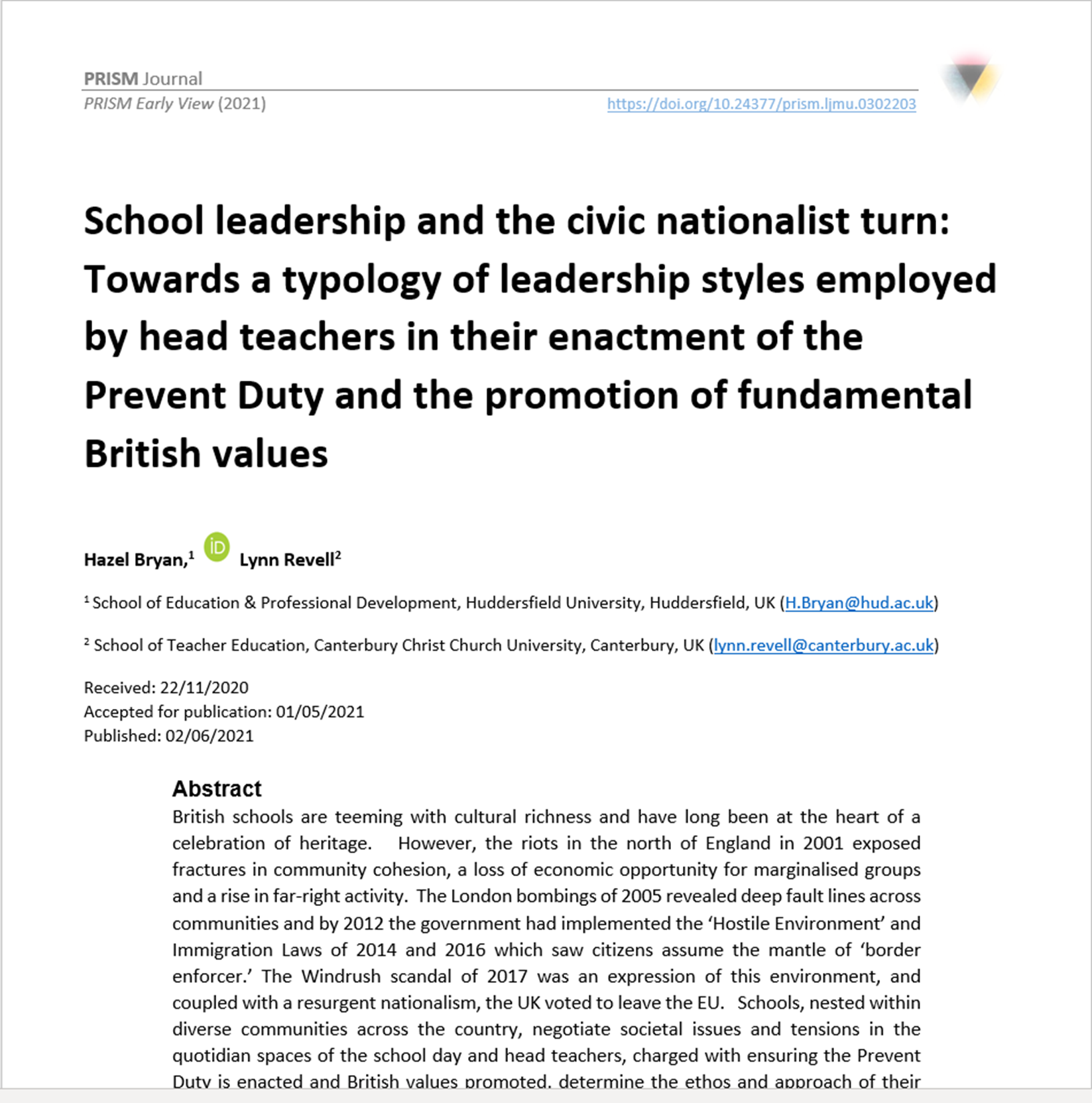School Leadership and the Civic Nationalist Turn: towards a typology of leadership styles employed by Head Teachers in their enactment of the Prevent Duty and the promotion of fundamental British values
DOI:
https://doi.org/10.24377/prism.ljmu.0302203Keywords:
Leadership, Radicalisation, Schools, Civic nationalism, Fundamental British values, PreventAbstract
British schools are teeming with cultural richness and have long been at the heart of a celebration of heritage. However, the riots in the north of England in 2001 exposed fractures in community cohesion, a loss of economic opportunity for marginalised groups and a rise in far-right activity. The London bombings of 2005 revealed deep fault lines across communities and by 2012 the government had implemented the ‘Hostile Environment’ and Immigration Laws of 2014 and 2016 which saw citizens assume the mantle of ‘border enforcer.’ The Windrush scandal of 2017 was an expression of this environment, and coupled with a resurgent nationalism, the UK voted to leave the EU. Schools, nested within diverse communities across the country, negotiate societal issues and tensions in the quotidian spaces of the school day and head teachers, charged with ensuring the Prevent Duty is enacted and British values promoted, determine the ethos and approach of their respective schools. Drawing on literature from school leadership, this research engages with head teachers in schools in England to explore the leadership styles they employ when enacting the requirements of the Counter-Terrorism and Security Act 2015 (Home Office, 2015) and the Teachers’ Standards (DfE, 2012) and navigating the civic nationalist turn.
Downloads

Downloads
Published
Issue
Section
License
Authors retain copyright and grant the journal the right of first publication with the work.
The version of the article published as part of this issue is licensed under a Creative Commons Attribution-NonCommercial-NoDerivatives 4.0 International Licence and allows others to read, download, copy, distribute, print, search, link to the full text of the first version of this article, or to use it for any other lawful purpose in accordance with the license. The author maintains copyright for the article published in this journal.
This journal provides immediate open access to its content and has no submission or publication fees.


